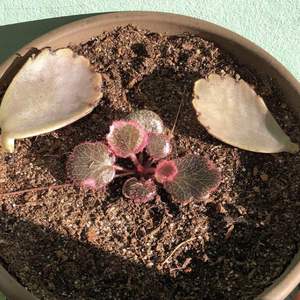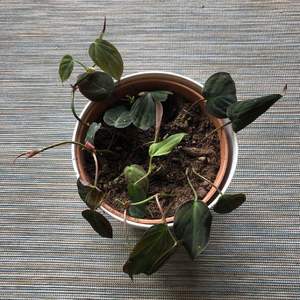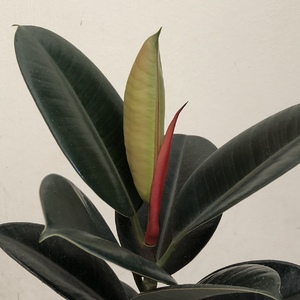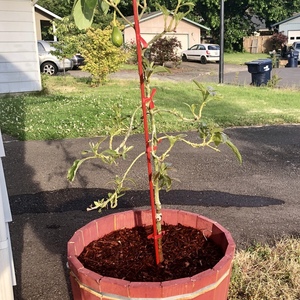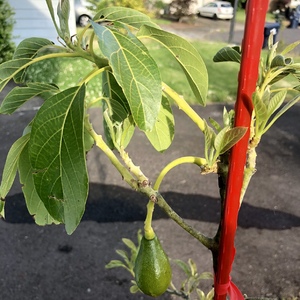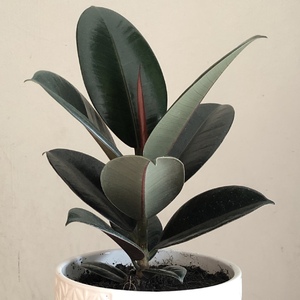文章
Miss Chen
2018年06月28日


6.Graptoveria 'Topsy Debbie'
Graptopetalums like 'Topsy Debbie' form rosettes of leaves that spread by offsets, which easily form new plants for your propagating pleasure. Plants must grow in full sun for best health and vigor.

7.Aloe hawthoroides
The classic aloe plant has gotten an update: Aloe hawthoroides has dozens of feathery bristles on each leaf, which are all bark but no bite. This touchable plant has a moderate growth habit and is tolerant of a wide variety of growing conditions, as long as you don't let it freeze or sit in stagnant water.

8.Kalanchoe rhombopilosa
Who can resist a plant called "pies from heaven?" This kalanchoe is but one of the many strange and beautiful living things that hails from Madagascar. The leaves are fuzzy, grey and covered with brown streaking. Insignificant yellow flowers may appear on stalks in the spring. Give your kalanchoe abundant light for healthy plants.
Continue to 9 of 10 below.

9.Echeveria gibbiflora 'Barbillion'
If you've ever observed the fleshy wattle of a turkey or rooster, you have seen something these fowl have in common with echeveria 'Barbillion:' they are both carunculated. This term refers to a bumpy, fleshy growth. Is it beautiful or hideous? Give it plenty of light and water sparingly, and see if the unusual appeal of this succulent grows on you.

10.Echeveria 'Blue Curls'
A single specimen of echeveria, 'Blue Curls' makes an exquisite statement in a container with its frilly leaves and pink and aqua coloration. Prevent water from accumulating within the rosette and remove dead leaves from the plant's base to keep pests from interfering with its vigor.
0
0
成长记
kensong
2018年06月24日

It's that seasom for my Desert Rose to flower again. New buds in this hot season.


1
0
成长记
kensong
2018年06月22日

My Ficus Elastica sprouted a new leaf and already another is on the way.
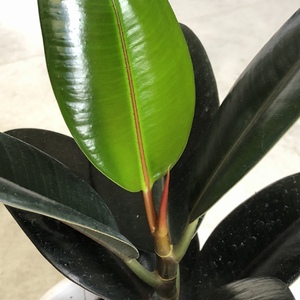

2
0
成长记
Plantlin
2018年06月21日

The little cutting has made a new leaf and the ‘mother’ is making two:)
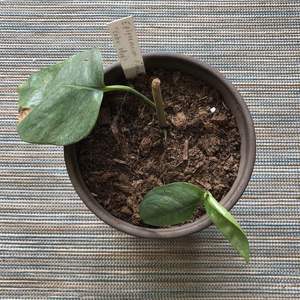

0
0
成长记
Plantlin
2018年06月20日

All the rooted ones are in soil now. Only two pieces didn’t make it. Now.... lets wait for two new beauties to develop:)




0
0
成长记
Plantlin
2018年06月20日

One of the two from the first batch in spagnum is making new geiwth already! So happy:)


0
0
文章
Miss Chen
2018年06月18日

Description: This herbaceous perennial plant is 1-4' tall, branching occasionally. The stems are square or round, and usually pubescent where new growth occurs, becoming glabrous with age. The hairless leaves are opposite or alternate along the stems, sessile or with short petioles, and up to 4" long and ½" across. They are narrowly lanceolate in shape, and sometimes have purple veins or spots. There are 4-8 teeth per centimeter along the margin of each leaf.
From the upper axils of some of the upper leaves, there appears a single flower with a long calyx tube on a short stalk (peduncle). This calyx tube is pubescent and more or less erect, terminating in 4 lanceolate sepals that often tinted purple or pink. These sepals are a little shorter than the petals. The 4 notched petals are white or light pink, and span about 1/3" across. At the throat of the flower, there is a prominent pistil that is often knobby at the end, which is surrounded by several stamens. These flowers bloom for about a month during late summer or early fall. The calyx tube matures into an elongated seed capsule, which splits open to release a multitude of tiny seeds with small tufts of reddish brown hair. These seeds are distributed by the wind. The root system is fibrous and produces rhizomes, which enables this plant to spread vegetatively.
Cultivation: The preference is full sun to light shade, and wet to moist conditions. The soil should contain lots of organic material to retain moisture. The foliage is rather fragile and can become damaged easily. This plant tolerates occasional flooding, and prefers rather cool conditions.
Range & Habitat: The native Cinnamon Willow-Herb occurs occasionally in northern and central Illinois, but it is uncommon or absent in the southern section of the state. Its range extends further to the south than other Epilobium spp., which are usually restricted to northern Illinois. Habitats include poorly drained areas of black soil prairies, moist woodlands, woodland borders, and various kinds of wetlands, including marshes, bogs, fens, seeps, and edges of ponds, rivers, or drainage ditches. The Willow Herbs are pioneer species that thrive on some kind of disturbance, such as fire.
Faunal Associations: The flowers probably attract bees and flower flies, which seek nectar and pollen. The caterpillars of various moths eat the foliage of Willow-Herbs, including Hyles lineata (White-Lined Sphinx), Eudryas unio (Pearly Wood Nymph), Anticlea multiferata (Many-Lined Carpet), and Scythris magnabella (Scythridid Moth sp.). The seeds are too small to be of much interest to birds. The foliage is non-toxic and occasionally eaten by mammalian herbivores, but it has low food value.
Photographic Location: A poorly drained area of prairie in Meadowbrook Park, Urbana, Illinois.
Comments: The flowers are rather small-sized, but they are often produced in abundance on large plants. The most distinctive characteristic of Cinnamon Willow-Herb is the reddish brown coloration of the tufts of hair on the seeds, which is responsible for the common name of this plant. Other Epilobium spp. have tufts of hair that are white or faded brown or grey. Cinnamon Willow-Herb also has serrated leaves with 4-8 teeth per centimeter, while other Willow-Herbs have leaves with either smooth edges or fewer teeth per centimeter. An unusual characteristic of the Willow-Herbs is the long calyx-tube of the flowers, which occurs behind the petals, and eventually becomes an elongated seed capsule. It looks like a flowering stalk (peduncle), but it is actually part of the flower where the ovaries are contained. In some members of the Mustard family and miscellaneous other plants, an elongated seed capsule develops in front of the petals. This is one way to determine whether the plant in front of you is a Willow-Herb, or a quite different species of plant.
From the upper axils of some of the upper leaves, there appears a single flower with a long calyx tube on a short stalk (peduncle). This calyx tube is pubescent and more or less erect, terminating in 4 lanceolate sepals that often tinted purple or pink. These sepals are a little shorter than the petals. The 4 notched petals are white or light pink, and span about 1/3" across. At the throat of the flower, there is a prominent pistil that is often knobby at the end, which is surrounded by several stamens. These flowers bloom for about a month during late summer or early fall. The calyx tube matures into an elongated seed capsule, which splits open to release a multitude of tiny seeds with small tufts of reddish brown hair. These seeds are distributed by the wind. The root system is fibrous and produces rhizomes, which enables this plant to spread vegetatively.
Cultivation: The preference is full sun to light shade, and wet to moist conditions. The soil should contain lots of organic material to retain moisture. The foliage is rather fragile and can become damaged easily. This plant tolerates occasional flooding, and prefers rather cool conditions.
Range & Habitat: The native Cinnamon Willow-Herb occurs occasionally in northern and central Illinois, but it is uncommon or absent in the southern section of the state. Its range extends further to the south than other Epilobium spp., which are usually restricted to northern Illinois. Habitats include poorly drained areas of black soil prairies, moist woodlands, woodland borders, and various kinds of wetlands, including marshes, bogs, fens, seeps, and edges of ponds, rivers, or drainage ditches. The Willow Herbs are pioneer species that thrive on some kind of disturbance, such as fire.
Faunal Associations: The flowers probably attract bees and flower flies, which seek nectar and pollen. The caterpillars of various moths eat the foliage of Willow-Herbs, including Hyles lineata (White-Lined Sphinx), Eudryas unio (Pearly Wood Nymph), Anticlea multiferata (Many-Lined Carpet), and Scythris magnabella (Scythridid Moth sp.). The seeds are too small to be of much interest to birds. The foliage is non-toxic and occasionally eaten by mammalian herbivores, but it has low food value.
Photographic Location: A poorly drained area of prairie in Meadowbrook Park, Urbana, Illinois.
Comments: The flowers are rather small-sized, but they are often produced in abundance on large plants. The most distinctive characteristic of Cinnamon Willow-Herb is the reddish brown coloration of the tufts of hair on the seeds, which is responsible for the common name of this plant. Other Epilobium spp. have tufts of hair that are white or faded brown or grey. Cinnamon Willow-Herb also has serrated leaves with 4-8 teeth per centimeter, while other Willow-Herbs have leaves with either smooth edges or fewer teeth per centimeter. An unusual characteristic of the Willow-Herbs is the long calyx-tube of the flowers, which occurs behind the petals, and eventually becomes an elongated seed capsule. It looks like a flowering stalk (peduncle), but it is actually part of the flower where the ovaries are contained. In some members of the Mustard family and miscellaneous other plants, an elongated seed capsule develops in front of the petals. This is one way to determine whether the plant in front of you is a Willow-Herb, or a quite different species of plant.
0
0




